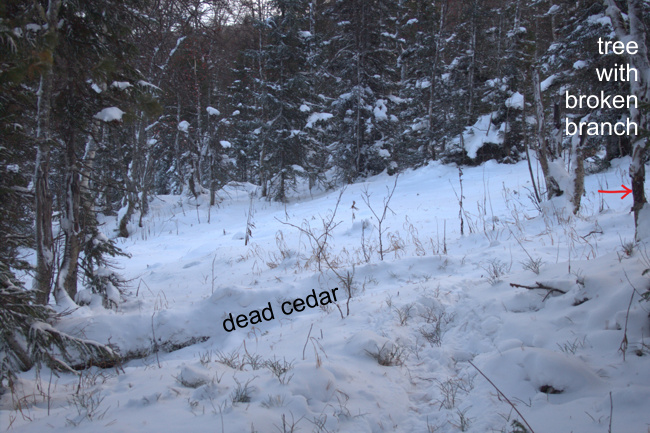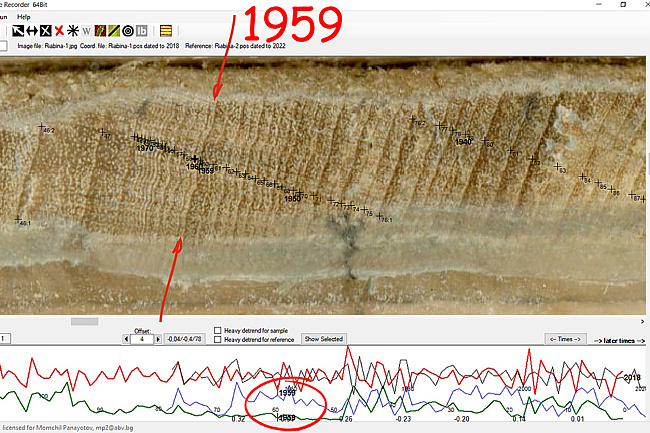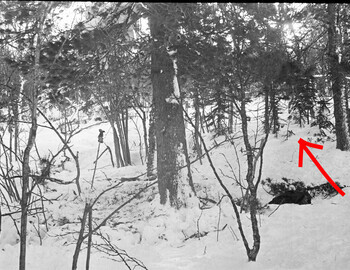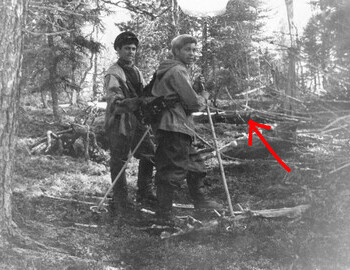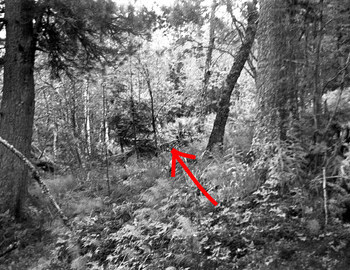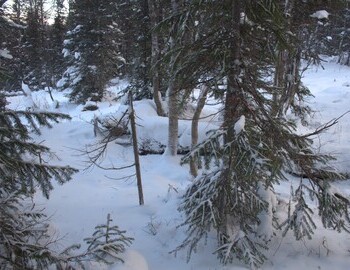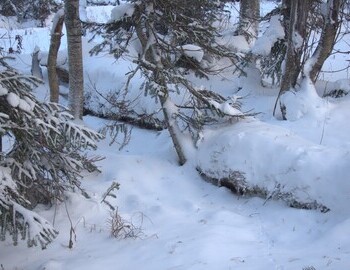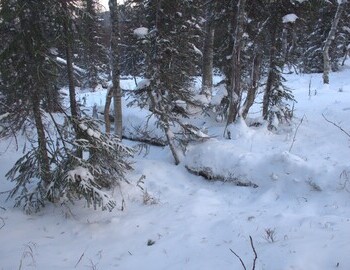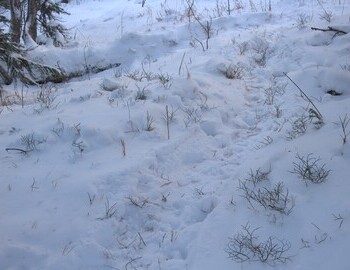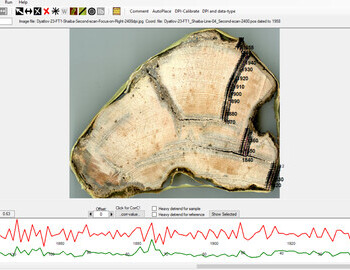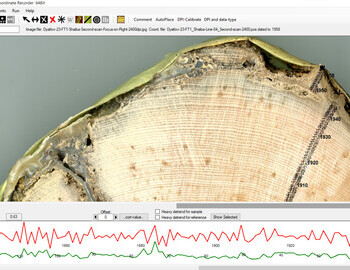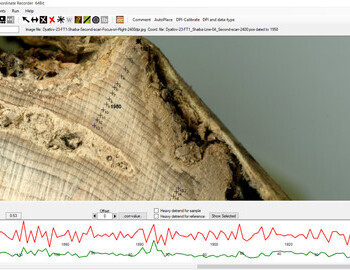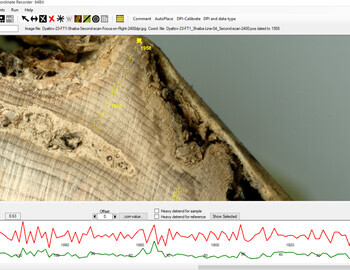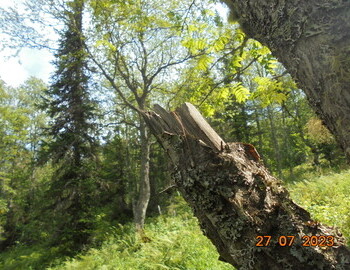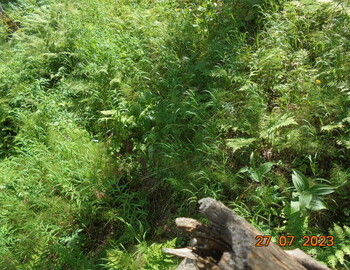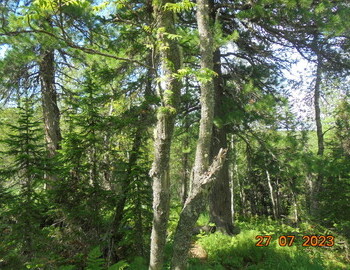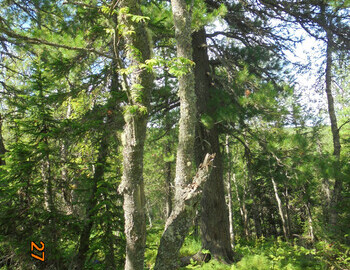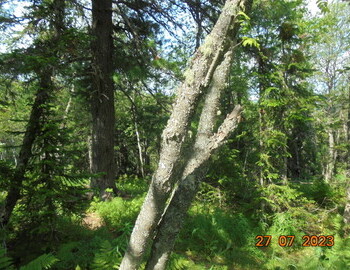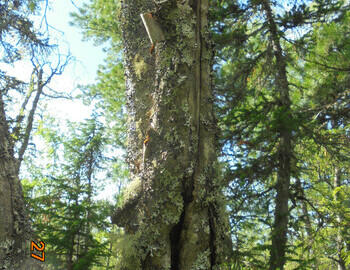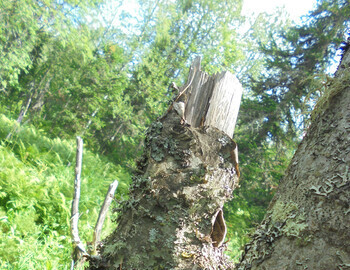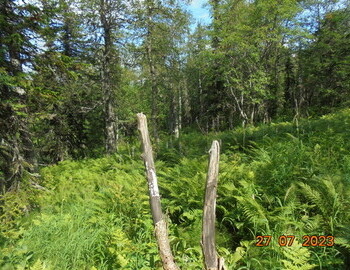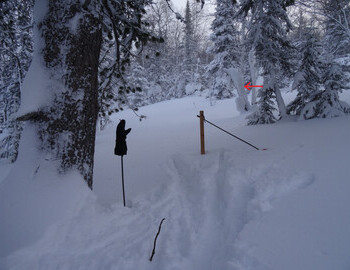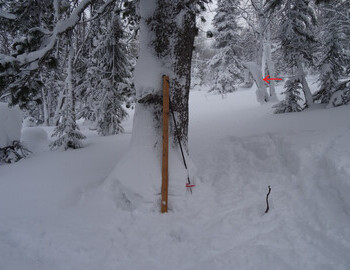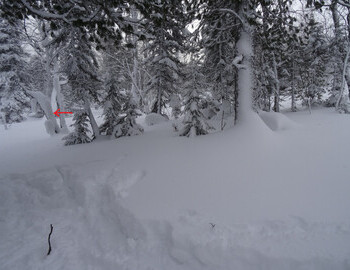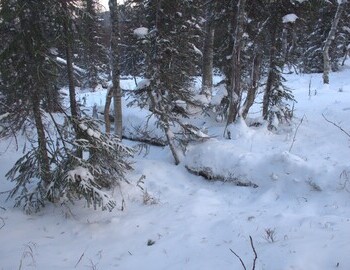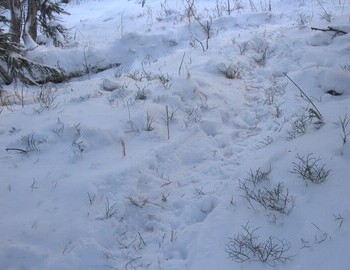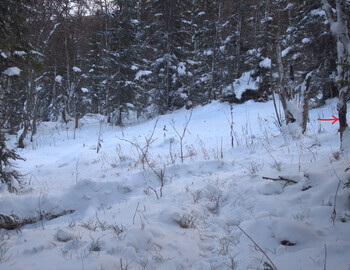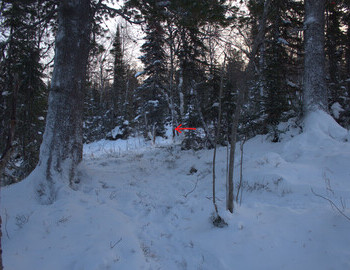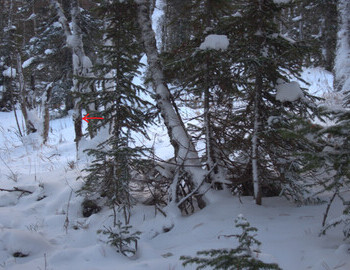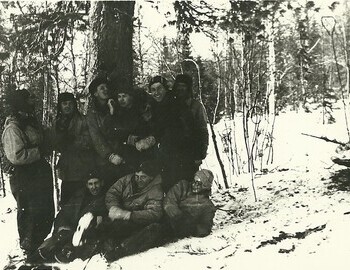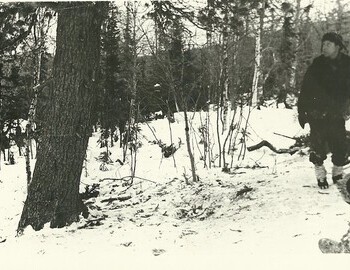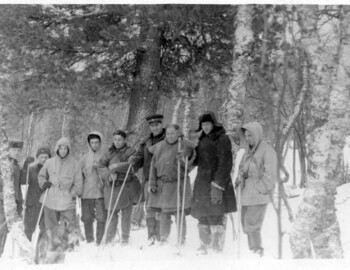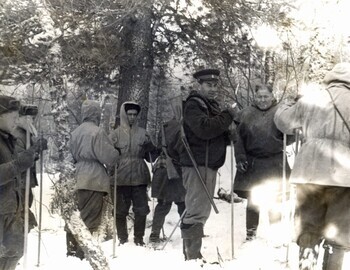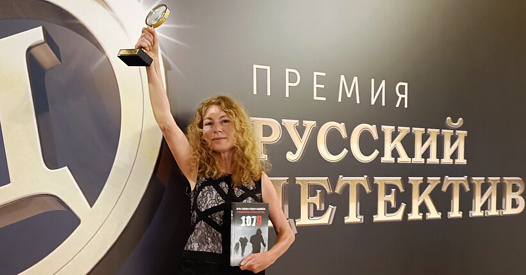
Dead Cedar
A 10m tall cedar lying on the ground 5m away from where the bodies of Doroshenko and Krivonischneko were found was analyzed by an expert dendrologist Assoc. Prof. PhD Momchil Panayotov. and the last ring is from 1958. In the photos from February 1959, this tree is already on the ground, covered with snow, so much that it can not be seen. The dating shows the tree fell after the end of 1958 and before the first bodies of the Dyatlov group were found.
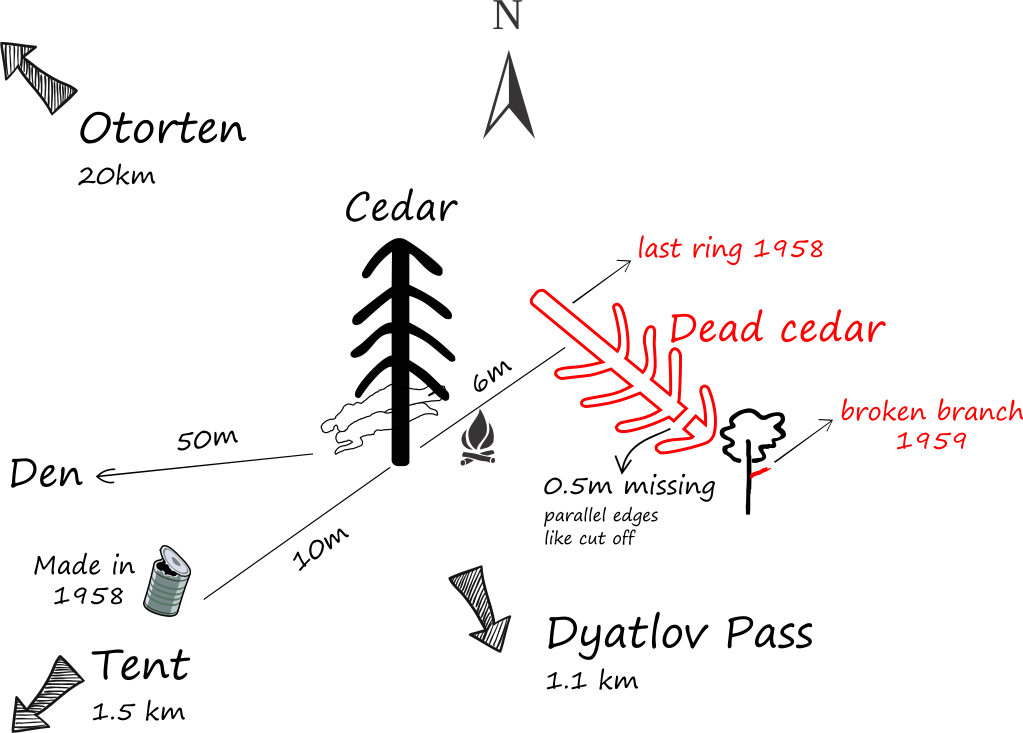
Location of the fallen cedar relative to the bodies found in 1959
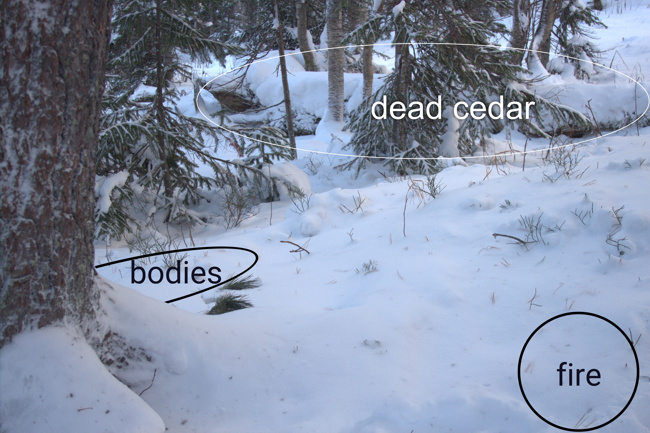
A dead cedar 10m tall lay 5m from the bodies of Doroshenko and Krivonichenko
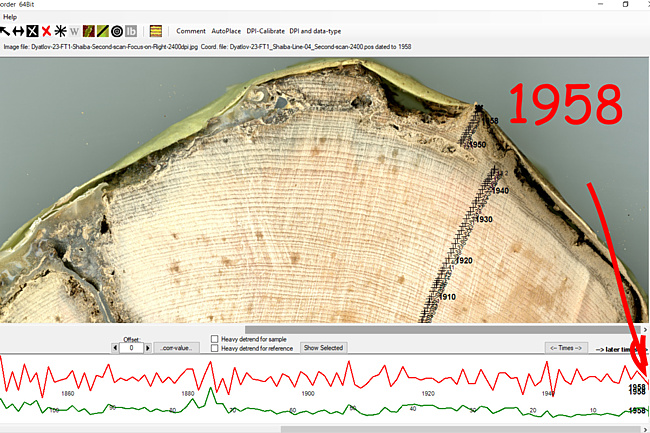
The tree died after 1958, and on the photos from February 1959 it is already covered with snow.
Broken branch
Dead cedar + broken branch
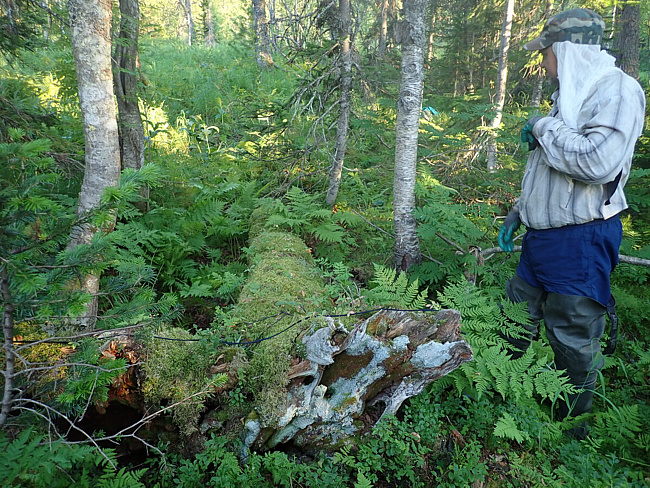
The cedar was uprooted. (see more photos)
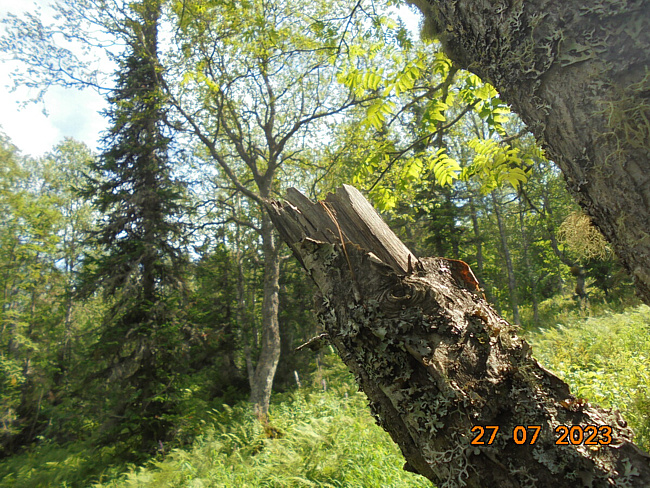
The broken branch was not used in the fire. (see more photos)
Seeing the Forest for the Trees
Askinadzi, the student who led the group in May 1959 and found Lyudmila Dubinina and subsequently all four bodies in the creek: "I don’t have a complete idea about a version, I agree with everyone who most convincingly voices the reasons for the injuries of Dubinina and Zolotaryov. Many fail when they have to explain the injuries of Lyuda and Zolotaryov."
Explaining the grave injuries is a good starting point for a theory. I was also perplexed why the causes of death were so different. Something killed three of them on the spot while the rest scattered and died from hypothermia. So the survivors of the initial impact could distance themselves from the epicenter, but died anyway. From exhaustion, not even exposure. What kind of force majeure can do that?
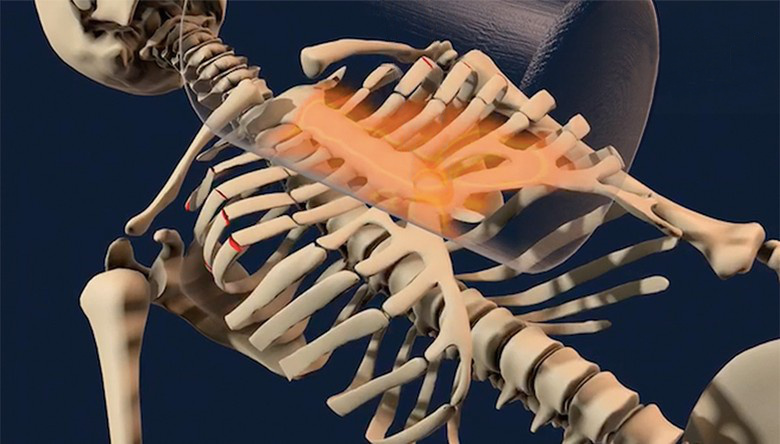
The peculiar thing about the Dyatlov pass mystery is that it has two locations, the slope and the ravine, and they are 1 mile and several hours apart. If a theory starts from the slope it can not end midway, but it has to follow the hikers all the way down in the forest and explain how they died. Just leaving the tent is not enough to have doomed 9 young people in excellent shape. Here are two examples of contemporaries and friends that have survived worse:
- On the Road of Trial - Does it sound familiar? Similar cases are described in "On the Road of Trial" by geologist Grigoriy Fedoseev. We find it possible that the cover up is inspired by the events described in this book. The book was published in 1958.
- "1079" book / Chapter 5. February 11-26 1959. Sverdlovsk.
"Тhe Sogrin group returned to Sverdlovsk from an expedition in the Subpolar Urals. They had not managed to carry out all of their scheduled tasks. They were supposed to go through a 500 km circular route, including path-breaking winter ascents to the peaks of the Sablya, Neroyka, and Telpoz-Iz Mountains. However, several emergencies caused a change in their plans. In the very first days, their tent was burned down, hence the hikers had to spend the remaining nights in snow bivouacs. The many-day-long blizzard and the sickness of one of the hikers forced the group to go back along their contingency route. Nevertheless, theirs was the world's first winter ascent on both the Sablya and the Neroyka."
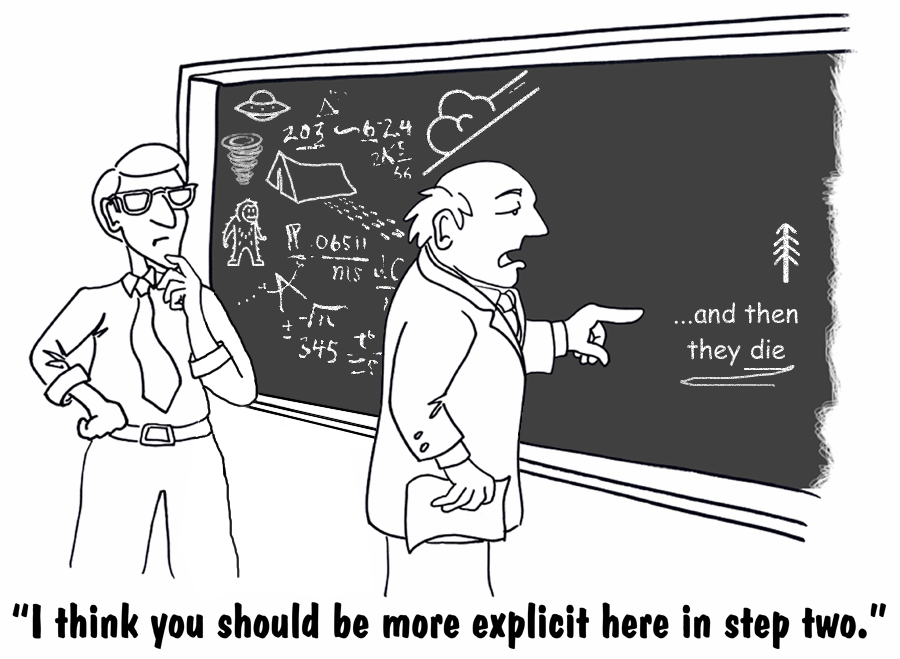
Sidney Harris cartoon adaptation for the Dyatlov pass.
Characters resemble Buyanov and Borzenkov on purpose.
Death by tree
In our theory the hikers are in for a very bad start - a freak accident kills three of their comrades. If they had fallen into a crevice it would have been better because the rest wouldn't be trying to help them for hours in the cold, exhausting their energy, trying to move the tree, to help them while they lay unconscious, unable to breathe. If there is an avalanche or the tent burns down and everyone jumps out of the tent it is different. You have the moral strength to fight. If you have lost the battle from the very beginning, because they are already dead, one of them a girl, you don't think about survival. You should, but you might be too crushed and not thinking straight. The adrenaline wears off. And what is the point anyway, they are dead.
I can try to break down our theory into as succinct an explanation as possible. Every theory starts with the poor state of the tent when it was found, shredded to pieces. But why is the tent on the slope to start with? It is designed to hang between trees? The location of the tent is not even on the group's route.
If we imagine the tent where it was supposed to be, in the forest, by the cedar tree, where the bodies were found, then everything makes sense. The hikers got there early on time, cut branches, made a fire, and set up their camp with access to water. In good spirits, they climb into the tent. Then the nightmare begins.
A tree crashes down on the tent. I can detail the full range of injuries that such a falling tree can cause. The stove, suspended inside the tent, causes the burns. The hikers frantically cut the tent open while trying to escape.
A mining expedition operates where the bodies were found. They do extensive blasting with explosives and send ground teams to collect the samples. The bodies of the hikers climbing up the slope for help are spotted from the air. Ground check team finds more bodies and transports them to the local morgue. The bodies remain unidentified but interrogations begin, hence the early date on the cover of the case files.
Two weeks later a massive search is initiated by the soviet government after premier Khrushchev is personally contacted by family members of the dead. This is where the nature of the soviet regime comes into play. Terrified that they may get into serious trouble for possibly causing the deaths due to their blasting, the mining officials order the bodies returned to the site where they were found since they haven't recovered all of them. The tent is set away from their working grounds. This is how the legend of the Dyatlov Pass incident is born and all its discrepancies and enigmas. In their rush to cover up, they dumped the bodies and didn't get all the clothes right. The entire mystery ensues from this desperate attempt to protect themselves from what could have been very severe consequences.
The incident takes place at the height of a major communist congress. In their last written communication, the Dyatlov group jokes "Greeting the XXI Congress with increased birth rate among hikers." Little do they know that they will be actually increasing the death rate.
Why do I keep going to the pass, what could still be found after 65 years?
In 2022 I brought from the pass the bottom of a tin can from cream manufactured in 1958. The artifact was found with a metal detector 30 cm under tree roots where the bodies were found. I have a letter from the plant that manufactured the tin can identifying its date and nomenclature. The significance is that according to the scenario the group went down in the ravine to die without food supplies. Also, the rescuers did not have, cream only condensed milk from the military reserve, bigger cans. We found plenty of their cans further away, where their camp was. I showed the artifact to the participants in the events in 1959 and they testified that it is not theirs.
In 2023 I cut off a disk from a huge fallen cedar exactly where the bodies and the canned cream were found. The analysis just came in, this is my BIG ANNOUNCEMENT, the last ring on that tree is from 1958.
I know that it is pure conjecture, but it has logical integrity, and I have just started. I know now where to look. I am going next year with a professional metal detector and I will find more items in the ground that could only belong to the Dyatlov group. Once people believe that they camped in the vicinity of the cedar where the den and bodies were found, the case will be turned literally upside down. This will mean that the tragedy started down in the ravine, where they were supposed to be, and not on the slope where the tent was found. So what killed them in the forest and why would anyone move the tent? We have been trying to answer the wrong questions all these years.
The Dead Cedar
In order to determine when did this cedar hit the ground we cut off a slice to try to piece together a whole core. The core last year shows rings up to 1948 but then the bark was rotten and the expert couldn't say how many years are missing. This year we came prepared with better tools and deeper knowledge about trees in general.
Last year probing this same cedar left us with mushy core that was very difficult to analyze. But now, lo and behold, we have a perfect sample to take back to Prof. Momchil Panayotov, member of the Dendrology department of University of Forestry, Sofia, Bulgaria.
Our dead cedar doesn't have a center, but we found a radial section with preserved bark and this is where I took three cores from. Dendrology doesn't only count rings, but thanks to the vast database of same type trees in the area, and Siberia in general, it can compare sequence of rings from other trees and tell you what years they correspond to. Here Prof. Momchil Panayotov explains this →
The famous Cedar is in perfect condition, except it doesn't produce pine cones. The fallen dead cedar on the other hand is on the ground, covered with green moss, no one is paying any attention to the poor thing, and I had to get all the information I could knowing very well that it would speed up its disappearance but at least it was noticed, it talked. RIP dead cedar. You will be missed but not forgotten.
Tree with broken branch
Questions and answers
Askinadzi asked me after the expedition in 2023, when he was looking to identify the items we found in the searchers camp, if we could more precisely identify when the cedar died. It brings me great pleasure that I can now oblige.
Askinadzi: Teddy, I have no right to criticize your theory, I will only voice my doubts. If, in your opinion, the tent was crushed by a fallen tree, discovered 64 years later, then in our time it immediately caught the eye as if it had fallen freshly. He wouldn’t even be covered in snow, like the guys under the cedar tree. But none of the living search engines paid attention to him, i.e., he was not with us yet. Moreover, three years later Valentin Yakimenko’s group came to the Pass, and she did not pay attention to it. Is it possible to determine by expert means (with the help of your dendrologist friend) when the tree fell (+ - 2-3) years?
Teddy: If you stick strictly to the theory, the tree had already been on the ground for 27 days when the searchers saw it. This tree is covered with snow in winter. Then the question is why it is covered, but the bodies and the fire are not. And now we come to the point which is at the center of the confusion according to our theory. We believe that the bodies (at least some of them) had already been transferred and washed to the Ivdel morgue by nurse Solter, and then returned. The two Yuri have been moved, everyone agrees on that. It strikes me that the corpses are not next to the fire, but on the other side of the cedar, and I think this is because the fire was lit by a third party, and they did not want to look at the bodies. The bodies were laid down temporarily while they were deciding what to do, and I think they were interrupted before they had time to finish the staging. We think that the fire and bodies were covered with snow for only a few days. They didn't lay there for 27 days while the tree was there the whole time.
Аскинадзи: Тедди, я не имею права критиковать Вашу версию, озвучу только свои сомнения. Если, по Вашему, палатку придавило упавшее дерево, обнаруженное через 64 года, то в наше время оно сразу же бросилось в глаза, как свеже упавшее. Его бы не занесло даже бы снегом, как ребят под кедром. Но никто из живых поисковиков на него не обратил внимания, т.е., при нас его ещё не было. Мало того, через три года на Перевал пришла групп Вали Якименко, и она не обратила на это внимания. Можно ли определить экспертным путем ( с помощью Вашего знакомого дендролога), когда упало дерево (+ - 2-3) года?
Тедди: Если строго придерживаться теории, то дерево, когда поисковики его увидели, уже 27 дней стояло на земле. Это дерево зимой покрыто снегом. Тогда вопрос, почему оно покрыто, а тела и костер нет. И вот мы подходим к моменту, который находится в центре путаницы согласно нашей теории. Мы полагаем, что тела (по крайней мере, некоторые из них) уже были перенесены и вымыты в ивдельский морг медсестрой Солтер, а затем возвращены. Два Юри перемещены, в этом все согласны. Мне бросается в глаза, что трупы не рядом с костром, а по ту сторону кедра, и я думаю, это потому что костер разводили третьи лица, и они не хотели смотреть на тела. Тела положили временно, пока решали, что делать, и думаю, их прервали, не успели закончить постановку. Мы думаем что костер и тела припорошены снегом всего несколько дней. Они не простояли так 27 дней, пока дерево все это время было там.
Galina Sazonova makes an observation that is a very compelling argument in favor that the bodies in creek were moved too.
Lyuda, Semyon and Kolya Thibeaux-Brignolle had no chance! Lyuda and Semyon would hardly have been saved, even if they had miraculously found themselves in a modern, very good (and there are some not very good) intensive care unit within ten minutes, and they would have been operated on immediately. Kolya - under the conditions of the same resuscitation and operative treatment - had a slightly better chance. But in those conditions - none. Moreover, if they were asked to move, relocate, undress and generally help in some way - they would simply hasten their death. If you are interested, I can describe it in what, exactly, was Lyuda's problem and Semyon's. By the way, few people understand this and they usually reduce conversations only to broken ribs. You know that it always bothers me, and why do I think that they died last? Imagine you see that the person next to you is bad. For the first few minutes he grabs his chest (because it hurts there and it's a reflex gesture), then you see that he starts to gasp or breathes with great difficulty (and they couldn't breathe normally) and at the same time there is no blood and he loses consciousness very quickly. What would you, not a doctor, do? Even if you are a doctor. You open the collar immediately to let air in (we think)! And then you unbutton the jacket to see - what is there on his chest, which he was holding on to. Especially enlightened ones can even begin to massage the heart. What I mean is that there would be traces, at a minimum, of their inspection! But they are none. On Zolotaryov, the scarf was wrapped around his neck and remained there. Kolya Thibeaux-Brignolle... I am 100% sure that with a head injury, someone purely instinctively will put something under his head.
У Люды, Семена и Коли Тибо не было никаких шансов! Люду и Семена вряд ли бы спасли даже если они чудом в течении десятков минут оказались бы в современной, очень хорошей (а есть и не очень хорошие) реанимации и им бы сразу сделали бы операцию. У Коли - при условии все той же реанимации и оперативного лечения - шансов было бы немного побольше. Но в тех условиях - никаких. Более того, если бы их пытались перенести, переложить, раздеть и вообще как-то помочь - просто бы ускоряли их смерть. Если Вам интересно, я могу расписать в чем, собственно, была проблема у Люды с Семеном. Кстати, это мало кто понимает и все обычно сводят разговоры только к перелому ребер. Меня знаете, что все время смущает и почему я думаю, что они погибли последними? Представьте, Вы видите, что человеку рядом с Вами - плохо. Первые минуты он хватается за грудь (потому что там больно и это рефлекторный жест), потом Вы видите, что он начинает задыхаться или дышит с большим трудом (а они не могли дышать нормально) и при этом никакой крови нет и очень быстро он теряет сознание. Что бы Вы, не врач, сделали? Да чтобы сделал даже врач. Сразу расстегивается воротник, чтобы дать доступ воздуха (как мы думаем)! А потом расстегивается и куртка, чтобы посмотреть - а что у него там на груди, за которую он так держался. Особо просвященные даже могут начать делать массаж сердца. Я к тому, что были бы следы, как минимум, их осмотра! А их нет. На Золотареве как был шарф на шею намотан, так и остался. Коля Тибо... да я на 100% уверена, что при травме головы кто-нибудь чисто инстинктивно сначала подложил ему что-нибудь под голову.
Why can't they see the fallen cedar?
|
1
|
On the question as to why can't all of these people "see" the fallen tree is to me, because it was on the ground for 27 days, it didn't just fall as Askinadzi says. The snow fall and drift for a month in the dead of winter down in the ravine can completely cover a fallen tree which was deep in the existing snow cover after the collapse to start with. |
|
2
|
The searchers in the photos are looking for bodies. So far, what they know is that the hikers left the tent and died from hypothermia. Even if a tree was right there on top of the snow they would sit on it and discuss where to look for the missing bodies. Askinadzi says they were working like robots, following orders, and we all know Lev Ivanov was out of his depth. No one was looking around for anything else but bodies. No one was securing and protecting the crime scene, taking notes and photos, and basically investigating. No one took photos even of the bodies, so why would they notice a fallen tree under the snow? |
|
3
|
All these photos are from before the bodies in the creek were found. No one was looking for something that could have caused the injuries later described by Vozrozhdenniy in the autopsy reports. The major traumas became public knowledge only after the case files were declassified. Not even the parents knew about the crushed ribs and skull. |
|
4
|
The photos from 1959 where the dead cedar can not be seen are the strongest evidence that it was already on the ground covered with snow. Otherwise it would be standing tall, as it's a 10m (33ft) tall cedar. |
|
5
|
Even in modern days no one but me is interested in this or any other tree. Researchers that visit the cedar regularly have known about this dead tree for decades. Still, to this day, no one wants to accept evidence that at the heart of the greatest conspiracy secret of the century, could be caused by something as simple as a fallen tree. I would call this intentional blindness (as opposed to inattentional blindness). |
The Dyatlov case is a Rorschach test, everyone sees what they believe in.
Afterword
The invisible avalanche
In 2019 former Sverdlovsk prosecutor Andrey Kuryakov reviewed the case files and went to the Dyatlov Pass and blamed an avalanche for the tragedy. He voiced his conclusions stripped from his uniform and was fired shortly after his public appearance. Nothing is simple in the Dyatlov case.
Politics aside, how can it be an avalanche if photos of the tent and witnesses testify that there is no sign of an avalanche. If the snow started moving it must have stopped at the tent. Hikers could have not, and would have not retreated calmly, in order, all clustered together along the path of the alleged avalanche. Forensic medical examiner Vozrozhdenniy testified that Lyudmila Dubinina, Semyon Zolotaryov, and Nikolay Thibeaux-Brignolle died minutes after the impact and the footprints do not show anyone being carried down. When the avalanche theory is discussed it is always about could an avalanche happen in dead of winter in the mountain. Of course freak avalanches can happen. This doesn't explain the myriad of strange things about this case, doesn't explain what actually killed them, or how they died, why the clothes don't match, where is the knife that cut the branches for the den when all the knifes of the group were found in the tent. According to the only surviving member of the group who identified the belongings – one of the hikers must be butt naked because all his clothes are still inside the tent. Another observation of Yuri Yudin after seeing the bodies in the morgue, how come no one has injuries or frostbite on the feet if they were walking in socks on cutting stone ridges for a mile in a blizzard? These same stones in some theories could crack open a skull, while not leaving a single trace on their feet? Who started the investigation on February 6 when the alarm sounded 2 weeks later, on February 20?
Will this case ever be 'solved'?
This case will never be 'solved' because it has a statute of limitations and after the fiasco with both the 2018 exhumation of the body of Semyon Zolotaryov and the 2019 'investigation' no official will get anywhere close to the case. This leaves us, the private researchers, to do whatever we please. But we will never agree on a single version. This doesn't mean we won't try to 'solve' it.
I have grown a very thick skin. As they say – slow success builds character fast success builds ego. Let's say I am working on my character. I go to the Dyatlov Pass for three years now and keep finding evidence that proves our theory. But even the people that help me dig up, or cut off the samples believe in other theories, aliens and reindeer if you can believe it. So they look for aliens and reindeer… And we keep arguing around the campfire at night and joining forces again in the morning to survive the taiga.
The ultimate cold case
65 years since the tragedy we are no closer to solving it. Evidence continues to be literally unearthed, to this day. The gist: nine hikers were found dead, barely clad, shoeless, a mile from their slashed from the inside tent, in the Northern Urals, in dead of winter, under circumstances that no one can fit into a single scenario. Yeti, aliens, avalanche, KGB, lovers quarrel, religious sacrifice, secret weapons (the list goes on...). The horrific details are so prolific that every conceivable theory can apply, but not a single one explains them all. Until our book, that is. There is tremendous appeal in an unsolved mystery with multiple deaths. And in this case we have lots of evidence, not the usual case of filling in the blanks. On the contrary, it looks as if pieces from more than one puzzle box were thrown in the mix. There are so many inconsistencies that there are theories that the hikers verse-jumped from a parallel world. Even searchers that found the bodies believe that there were two groups, this is how weird the testimonies are.
Death loves company
My involvement started with a near death accident in Indonesia while climbing volcanoes (photos from the incident). While fighting for my life someone said that I look as if I have been on the Dyatlov Pass. At the time I didn't know what he was talking about. I tried to learn what happened to these poor souls. The recovery opened a void in my lifestyle as a traveler and I filled it with research on the Dyatlov case. This is how DyatlovPass.com was created. There was nothing in English, or nowhere to find the archives in Russian. For more than 10 years I painstakingly unearthing everything related to the incident and made it public. I wanted to store all the case files, recollections, photos and current developments under one domain. I keep the originals, often handwritten documents, scanned, deciphered and translated in English.
At some point when I earned my name amongst the Russian researchers, they started helping me. Igor Pavlov, a legend in this matter, became my mentor. In 2019 I was invited by the Discovery Channel's "Expedition Unknown" with Josh Gates, to join the film crew as an expert on the Dyatlov case (IMDB). As a result, I gained many insights, and after returning from the Dyatlov Pass I dared to venture my own theory. This theory of mine nailed what killed them, but didn't explain what happened after that. Igor Pavlov filled the gaps. There is so much information on the case that if you read separately the case files, diaries, keep track who is who, one tends to drift into a theory to remain sane, there is no other way to retain all the information without knowing what is relevant to the tragedy. As a result the movies/books/discussions are biased. "1079" book reads like a true cold case. It was never meant to be entertaining or emotional, yet I promise you will cry at the end of chapter 7. There is not iota of fiction up to the last chapter 25 where we offer our scenario of events that explains the unexplainable. The book is a reference aid regardless of the theory you want to prove, it is all there, the mother load of information on the case. Igor Pavlov died before the book was out of print. I sent him an author's copy printed in the US for his birthday which he didn't live to see. I didn't say goodbye, he never mentioned his health. Igor Pavlov was erudite, a nuclear physicist who helped cleaning after Chernobyl. He died from pancreatic cancer at the age of 58.
* * *
"The Dyatlov Pass Incident is one of the most confounding mysteries of the 20th century. Since it occurred in the Soviet Union sixty two years ago, it has gained world-wide fame and an international following, resulting in dozens of books, articles, and documentary films. Teodora Hadjiyska is one of the world's foremost authorities on the Dyatlov enigma and also the creator of Dyatlovpass.com, the most comprehensive website on the subject. I highly recommend her work!" — Douglas Preston, International bestselling author and journalist
* * *
"Researcher Teodora Hadjiyska is the world's foremost expert on the Dyatlov Pass incident, having compiled and translated every known document related to the case before putting it on the web for the public to analyze." — Josh Gates, Expedition Unknown
"1079" won the "Russian Detective 2024" award for "Documentary Detective"
June 8, 2024
"1079. Стихийная сила Перевала Дятлова" стал лауреатом премии "Русский детектив 2024" в категории "Документальный детектив". «Победу в этом конкурсе, полученную премию я посвящаю своему соавтору Игорю Павлову, - сказала Теодора Хаджийска со сцены. – Без него этот проект не состоялся бы.»
"1079. The Overwhelming Force of Dyatlov Pass" became a laureate of the "Russian Detective 2024" award in the "Documentary Detective" category. “I dedicate the victory in this competition and the award received to my co-author Igor Pavlov,” Teodora Hadjiyska said from the stage. “Without him, this project would not have happened.”
Hero of the day
None of this would've been possible if it wasn't for Assoc. Prof. PhD Momchil Panayotov from the Dendrology department of the University of Forestry, Sofia, Bulgaria. He is also head of the Bulgarian Extreme Freeride Ski Association and member of the Mountain Search and Rescue. Maybe the most important quality concerning the Dyatlov case, after being an expert in both dendrology and avalanches, is that he is not partial to any theory. He was checking his findings multiple times and providing me results with complete objectivity.
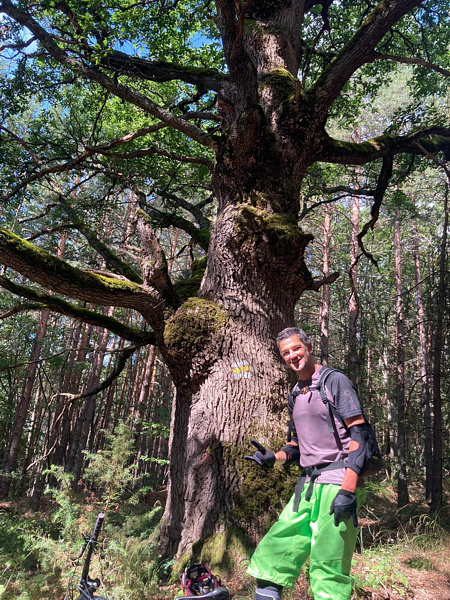
Assoc. Prof. PhD Momchil Panayotov has many publications on dendrology
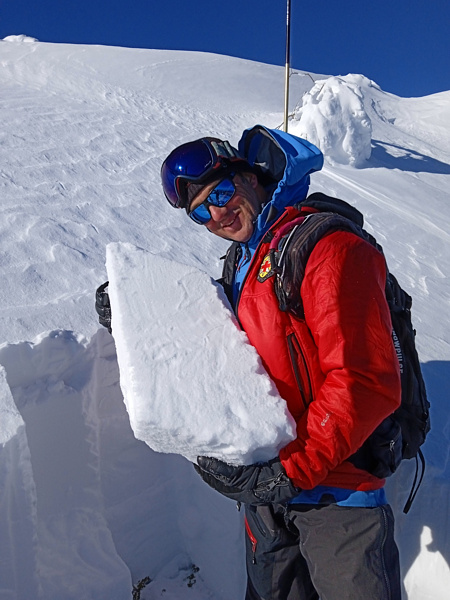
Assoc. Prof. PhD Momchil Panayotov is avid educator about safety in winter sports
The video below was shot after the expedition in 2022 i.e. it doesn't reflect the latest discovery of the 1958 ring. In it the dating of the core taken from the dead cedar came back with last ring in 1948 but even then it was clear that the outer rings are missing. It became imperative that we saw off the fallen tree for a more precise dating. In 21:35 the expert talks about the mountain ash with the broken branch that made the made the collapse the rings in 1959. The video has Bulgarian, Russian and English subtitles.
You can discuss this topic on Dyatlov Pass Forum.

